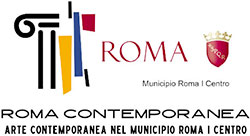"Bodies and Identities: Between Human and Animal" brings together two artistic visions that explore the relationship between the human being and the animal world through the juxtaposition of body and face. The works of Circé and Vittoria Notarbartolo di Villarosa, though emerging from distinct approaches, converge on common ground that examines the essence of identity.
Circé focuses her research on the human body, choosing to omit faces to draw attention to physicality: the flesh, gestures, and forms. The absence of the face emphasizes the body’s anonymity, transforming it into a symbol of universal human experience. Her scenes reveal a rawness intrinsic to life, a reflection of reality and imperfection.
Vittoria, on the other hand, focuses on animal faces, using the gaze as a universal language. Her sculptures evoke both strength and vulnerability, suggesting a deep connection between humans and animals, rooted in shared emotions and instincts. For Vittoria, the gaze does not lie; it is the most powerful means of expressing essence and the dialogue between instinct and reflection. In every animal’s gaze, there is a window into humanity’s soul, a bridge between species that reminds us of our interconnectedness, transcending the barriers of language and race.
This dialogue is built through the confrontation of these two visions: on one side, Circé’s faceless bodies explore the universality of the human form, while on the other, Vittoria Notarbartolo di Villarosa’s animal faces evoke an archetypal identity that connects humans to their most instinctual nature. Their research intertwines in a shared reflection on the essence of identity, inviting the viewer to explore the boundary between human and animal, presence and absence, the physical and the symbolic.
The studio becomes a space of exchange and cross-pollination, where body and face, nature and culture, meet to offer new perspectives on identity and its representation.



